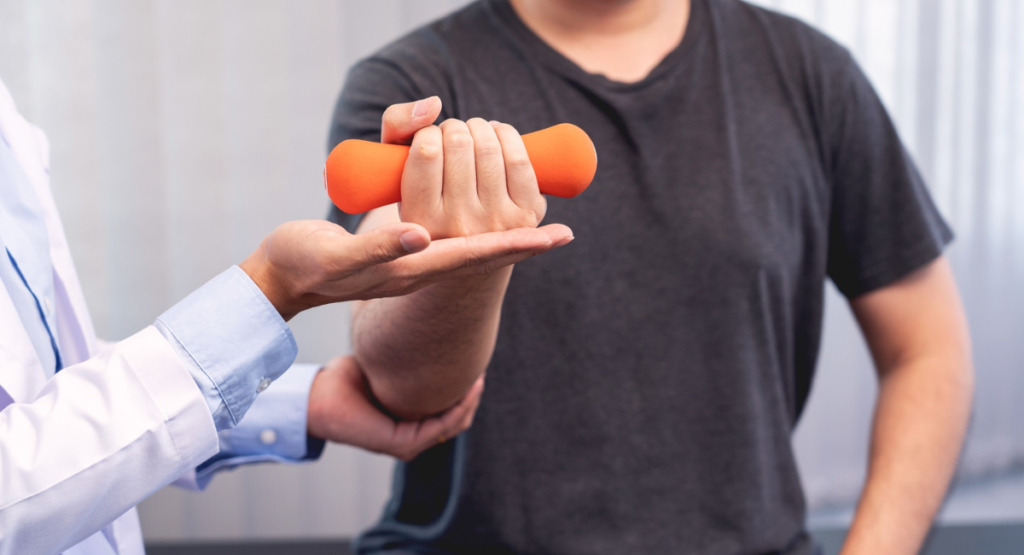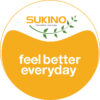Strokes are not just incidents that occur as a part of life but they are dramatic life changing events that caused severe changes to the physical realm of a person’s life. Strokes demand that one undergoes the process of relearning how to walk, sit, stand, or even hold objects and this only happens when a routine has been put in place and strictly followed. At Sukino Healthcare, we value the need of listening to clients who have suffered a stroke and developing unique successful medical rehabilitation programs that will enable them get back to their normal lives. The following is a comprehensive guide that describes potential exercises to perform and strategies that one can apply to help in the recovery process.
Understanding Stroke Rehabilitation
Stroke rehabilitation focused on restoration to the highest level of function and achievement of the patient’s ability to live a full and independent life. There are different types of rehabilitative protocols that are carried out in order to strengthen the muscles, as well as coordinate and balance them, and also in order to restore flexible movements. Rehab starts must occur immediately to ensure that patients get the greatest chance at regaining their abilities.
The Importance of Early Rehabilitation
Rehabilitation should be initiated as soon as is practically possible in order to improve the quality of life for bilateral stroke survivors. Rehabilitation should start as early as possible to avoid severely impacting the patient’s quality of life as well as reduce the extent of the disability. It fosters neuroplasticity, where the brain could change its wiring diagram basing on new experiences. This process is essential when carrying out tasks that are aim at regaining lost functions.
Tailored Exercise Programs
Therefore, at Sukino Healthcare, we strongly recommend that every patient develop an appropriate exercise regime which should be customized to fit his/ her physical abilities and requirements. As patient care specialists, our inter-professional team of healthcare professionals develops these programs to be safety sensitive, efficient and meeting the patient’s intent and purpose for rehabilitation.
Core Exercises for Stroke Rehabilitation
1. Range of Motion Exercises
Flexibility exercises are essentially basic to stretching and avoiding rigidity of the movements of the joints. These exercises include active and passive activities that entail use of different parts of the joints, and they can be done in consultation with the staff.
Examples:
- Passive Range of Motion (PROM): This is performed in cooperation with the caregiver or therapist assisting the child with the stroke.
- Active-Assisted Range of Motion (AAROM): The gravity is then reduced, and the patient tries to move the limb with some help.
- Active Range of Motion (AROM): The specific action describes the situation when the patient uses the limb freely for any purpose.
Benefits: These exercises are useful in keeping joints most of which are stiff after a stroke, free from pains and contractures thereby ensuring muscles do not become shorter.
2. Strengthening Exercises
Strengthening exercises which aim at enhancing the muscular strength of a person, which is usually impaired due to stroke. These are big exercises focus on large muscle groups and can therefore be done without equipment or with body weight only, with bands or even very light dumbbells.
Examples:
- Leg Lifts: Build the strength of the large muscles in the lower part of the body.
- Arm Raises: This will help in improving the upper body strength to be used in supporting body weight especially during swimming.
- Bridges: Improve endurance of the lower back muscles, glutes, and the muscles of the core.
Benefits: These exercises enable interventions in terms of strength of the muscles, flexibility, and functional motor gains in patients.
3. Balance and Coordination Exercises
Separate patient’s feet and perform balance and coordination exercises to minimize his or her chances of falling and enhance the condition of stability. These exercises involve coordination and balance to a certain degree as one tries to go through the exercise routines.
Examples:
- Standing on One Leg: It helps strengthening of the muscles of the legs and balances also.
- Heel-to-Toe Walk: Strengthens teamwork and reduces unnecessary movement.
- Seated Marching: Strengthen and fortify the muscles of the abdomen which aids when sitting.
Benefits: Reduced postural sway and stagger movement enable a balance of users in preventing falls while maximizing mobility in various activities to gain independence.
4. Flexibility Exercises
Fredding is a form of exercises that entails stretching with an aim of enhancing or at least, retaining the flexibility of muscles together with the joints of the body. These exercises are extremely useful to avoid muscle contracture and for the overall better body movement.
Examples:
- Hamstring Stretch: Stretches the back of the thigh by pulling the muscles further from their insertion.
- Calf Stretch: He also performed low-lying crunches that enhanced muscle flexing of the lower leg.
- Shoulder Stretch: It helps to enhance the physical flexibility especially of the upper body.
Benefits: Flexibility is the ability to move easy without pains and guards against formation of contractures.
5. Cardiovascular Exercises
Cardiovascular exercise can be categorized as some of the best exercise regimens as they help to strengthen the heart and increase the general endurance. These exercises make the heart rate fast as well as boost the amount of blood circulated in the body.
Examples:
- Walking: I was just wondering how such a simple method can have such a large impact on cardiovascular health.
- Cycling on a Stationary Bike: Exercise with a minimum amount of stress on the arteries and veins that improve the circulation of blood.
- Aquatic Exercises: Hydrotherapy aerobics that incorporate low impact systems for the joints as well as cardiovascular systems.
Benefits: Enhanced cardiovascular endurance is typically in a better position to withstand the task ahead, forward blood circulation together with better functional recovery.
The Role of Occupational Therapy
1. Functional Tasks
Occupational therapy relates to the way, in which the professionals attempt to restore the ability to perform certain tasks. This entails performing functional activities that may be carried in real-life conditions.
Examples:
- Dressing and Grooming: Getting dressed and changing clothes as well as washing or dressing up in a particular manner.
- Cooking and Meal Preparation: Counting, measuring, using knives and spoons, and other manipulative tasks that add value to kitchen work.
- Using Adaptive Equipment: The novel concepts include reaching for objects such as using reachers, grabbers and utensils adapted for hand movements or all of which may entail using children’s hand.
Benefits: One may successfully complain about pain, discomfort, and other related issues but all is not lost for a patient who has had their mobility and coordination skills boosted as this leads to better functionality and therefore, better quality life.
2. Cognitive Exercises
Reasoning therapies are designed to facilitate changes in thinking patterns, exercise functions such as memory, attention, and other cognitive skills in patients. It is essential to note that stroke patients’ functional disabilities are primarily reflected in cognitive disturbances.
Examples:
- Memory Games: Puzzles that involve short-term and long-term memory in the processing of information.
- Puzzle Solving: Strengthens problem-solving and critical thinking in solving various issues.
- Attention Training: A type of exercises that is used to increase the level of concentration and the time being devoted on a certain task.
Benefits: Improved cognitive processes lead to improved levels of functioning post trauma and during normal daily activities.
Integrating Technology in Rehabilitation
1. Virtual Reality (VR) Therapy
As mentioned above, VR therapy entails the application of virtual environments in treatment processes especially in facilitating the simulation of real environments. It is also useful in allowing the child to perform exercises, and literally engage in a motor activity at will.
Examples:
- Simulated Walking: Doctoral and simulation of movement and walking over the obstacles in cases of disability.
- Hand and Arm Exercises: Complex assignments that help to develop coordination, dexterity, and the sense of touch on the fingers.
Benefits: Besides, VR therapy is inspiring and engaging, which makes it more effective for providing a certain stimulating outcome for the rehabilitation.
2. Robotic-Assisted Therapy
Some types of orthotics and assistive devices are robotic-like aiding in performing motor tasks and offering a means of receiving biofeedback for the improvement of motor functions.
Examples:
- Robotic Exoskeletons: Namely, support motions of the lower extremities and whole body support, particularly support for walking.
- Robotic Arm Devices: Help with the activities including reaching, grasping, handling Utensils or any small objects.
Benefits: Rehabilitation robots help restore and reinforce motor patterns crucial for rehabilitation, which are difficult to perform without a robot in patients with severe disabilities.
The Importance of Mental Health Support
1. Counseling and Therapy
Emotional and mental aspect of the care is also important for stroke patient and this includes counseling to handle psychological problems. Due to this, counseling and therapy create a platform through which these issues can be dealt with.
Examples:
- Individual Therapy: Such sessions may involve individual counseling by a psychologist or counselor.
- Group Therapy: Blogging and discussion message boards that allow persons who have similar cases and face similar challenges to meet and discuss how they are going to handle the situation.
- Family Counseling: To supplement the recovery process, it is crucial to employ other family members.
Benefits: Psychological treatment optimizes rehabilitation, increases a patient’s drive and resilience in regard to accepting the post-stroke lifestyle changes and finding ways to ease stress and distress.
2. Mindfulness and Relaxation Techniques
Practical and easy to follow relaxation methods can also be used to lessen tension and its effects on human body and mind. These strategies can thus be applied during everyday learning activities as a way of promoting emotional well-being.
Examples:
- Meditation: Practices that involve managing breath and the way one directs their focus.
- Progressive Muscle Relaxation: Activities that make it possible to reduce tension from specific muscles in the body.
- Visualization: Introducing positive ideas in thoughts and visualizing and thinking of positive circumstances in life.
Benefits: Fatigue management, better response to daily stress, and general health improvement.
Conclusion
Stroke rehabilitation is not a simple process and involves PT, OT, use of technology, and even psychological counseling to help regain strength and mobility. As Sukino Healthcare, we pride ourselves in making sure stroke patients receive the best rehabilitation services which is a holistic approach and distinguish for each client. When integrated in the overall rehabilitation process, in consultation with the individual’s dedicated physical therapist, these exercises and strategies will help get the person back to independent living.
We are India’s first comprehensive continuum care provider. We provide multidisciplinary out of hospital care to acute and post-acute and chronically ill patients at our critical care facilities and your home.


